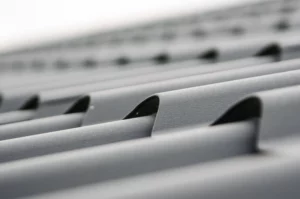Metal Roofing & Weather: Best Warm & Cold Climate Roof Considerations
Weather affects everyone. Whether you’re building your home or business in an area with extreme heat, heavy snowfall, or moderate conditions, you must consider the weather-related aspects during the design stages. If you’re installing a metal roof on your structure, it’s crucial to take into account the weather it may encounter. Doing this will ensure your metal roof remains durable and functional. Plus, it will safeguard the investment of your client or property owner.
At Ottawa Metal Roofs, we understand the impact of weather on choosing the right products and systems for a project. Our in-house architectural teams provide various services and assistance to architects, engineers, and other design professionals. By collaborating, we can help you during the critical design phase to ensure your metal roof system is suitable for the environment.
In this article, we’ll cover the crucial metal roof design considerations for warm and cold climates.
Metal Roof Design Considerations for Warm Weather Climates
Cool Metal Roofing System
If your property is located in an area where it gets extremely hot, it’s essential to install a cool metal roofing system. This will keep the property cool. This means you need to paint or coat the metal so that it reflects the sunlight and doesn’t absorb as much heat. Doing this will also ensure that your cooling system inside your property doesn’t have to work as hard, resulting in energy savings of around 7 – 15%.
UV Exposure Protection
When installing a metal roof in a warm area, you need to ensure that your metal roof is coated with specialized paints that can withstand high levels of UV exposure. We recommend one of these paint finishes: Polyvinylidene fluoride (PVDF) and silicone-modified polyester (SMP).
Fire Resistance
Installing fire and combustion-resistant roofing materials in areas with hot and dry weather is important to prevent fires. Fire-rated building materials can also prevent the spread of fire between structures.
Hail Resistance
To ensure a roof can withstand extreme weather calamities such as hurricanes, tropical storms, hail, tornadoes, and wind-driven rains—you need to have a standing seam roof system that is tested to withstand these conditions.
Proximity to Coastline or Water Bodies
If your property is located in warm weather areas and near coastal or saltwater areas, it’s important to remember that it can corrode your metal roofs. In this situation, using an engineered aluminum roof system rather than a Galvalume system is advised. This is because aluminum is more resistant to corrosion and rusting caused by saltwater.
Metal Roof Design Considerations for Colder Climates
Snow Retention and Shedding Systems
Snow buildup is a major issue for properties in cold weather regions. Snow accumulation roofs can cause safety concerns to those residing, entering, or exiting the building. Plus, falling snow can cause damage to property’s windows, doors, plants, and cars. To limit build-up and potential damage, the roof design should have a snow-shedding or retention system. In areas where snow is common, ensure the roof has a steeper pitch/slope to allow for snow retention over doorways, walkways, garages, and other accessible areas.
Ice Dam Prevention
It’s common to see ice dams forming on the roofs of properties in cold environments. This can be concerning as it can cause water to back up and pool in certain areas, leading to leaks and other damage. Choosing a standing seam metal roof can greatly reduce the chances of this happening. Standing seam metal roofs allow water to flow off the surface and prevent ice dams from forming. Furthermore, properly installed insulation and ventilation systems can eliminate ice dams from forming completely in some circumstances.
Proper Structural Support
Ensuring proper structural support underneath standing seam metal roofs is important in colder climates to manage snow build-up. Snow is heavy and can cause serious structural damage. Hence, it’s vital to ensure that the property has the required snow load capacity to handle both the weight of snow.
Proximity to Coastline or Water Bodies
As previously mentioned about the concerns of metal roofing in hot weather, the same principles can be applied to properties in colder regions near coastlines or saltwater bodies. It is recommended to install an engineered aluminum roof system with proper accessories instead of a Galvalume system.
Final Words
If you’re designing a project that involves a standing seam metal panel system, it’s important to consider how the weather in your area can impact it. Understanding your location’s weather patterns allows you to create a durable metal roof that meets your client’s expectations. Remember that proper ventilation and structural support should always be in place when installing a metal roof system. With the right design considerations, you can create an effective solution for any climate.

